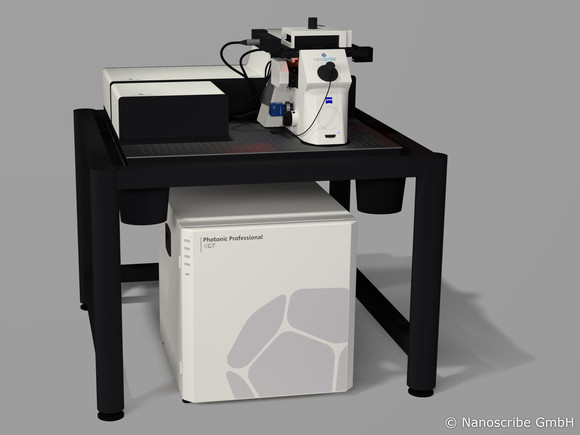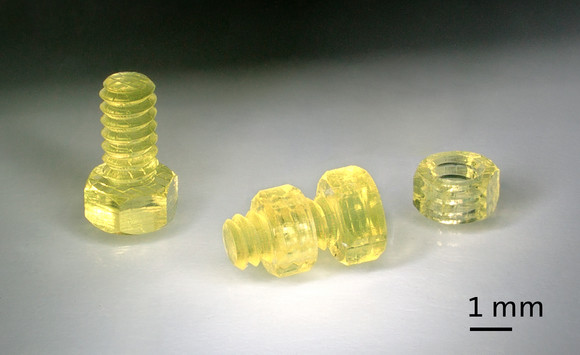Nanoscribe, a German company specialising in nano, micro and meso scale 3D printing, has combined its 3D micro printing capabilities and conventional serial production. The new production method can produce polymer master molds for small and high-resolution components beyond the limitations of SLA 3D printing.
After the master molds are 3D printed with Nanoscribe’s Photonic Professional GT 3D printer, they can be used to make secondary molds for injection molding and thermoforming, allowing reproduction of small parts for components with shape fidelity.

Printing the master molds
The Photonic Professional GT can produce nano and micro-structured plastic components. The technology works using two photon polymerization, where a laser cures part of a fluid photosensitive material, solidifying it layer by layer. With two-photon polymerization the resolution can be as low as 200 nanometers or as high as a couple of millimeters.
The Photonic Professional GT 3D printer has its own software to optimise the process, and Nanoscribe also provides different negative tone resists and other UV-sensitive materials to target bring out different qualities in what is being 3D printed.
The microscopic 3D printed results can then be used to create inverse molds to produce components from other materials such as hydrogels (for biological applications) or metal for optic and electronic applications.

Micro-tooling with the master molds
The master molds produced with extremely high resolution using the Nanoscribe GT 3D printer allow micro-optical or holograpic shapes to be serially manufactured for electronic, optic and fluidic applications.
For example, components for micro-optics can have vertical slopes, sharp edges and complex asymmetric geometries whilst also being suitable as a master mold for manufacturing. The master molds can then be be used to make nickel shims with electro-forming.
The shim, produced by electro-depositing nickel into the 3D master, together with spraying another layer of metal. This “replica mold” is the inverse of the master mold, and can then be integrated into other series production.

For more information on microtooling in 3D printing, subscribe to our free 3D Printing Industry newsletter, follow us on Twitter, and like us on Facebook.
Featured image shows a Tiny Eiffel tower 3D printed by the Nanoscribe GT. Photo by Beau Jackson.


